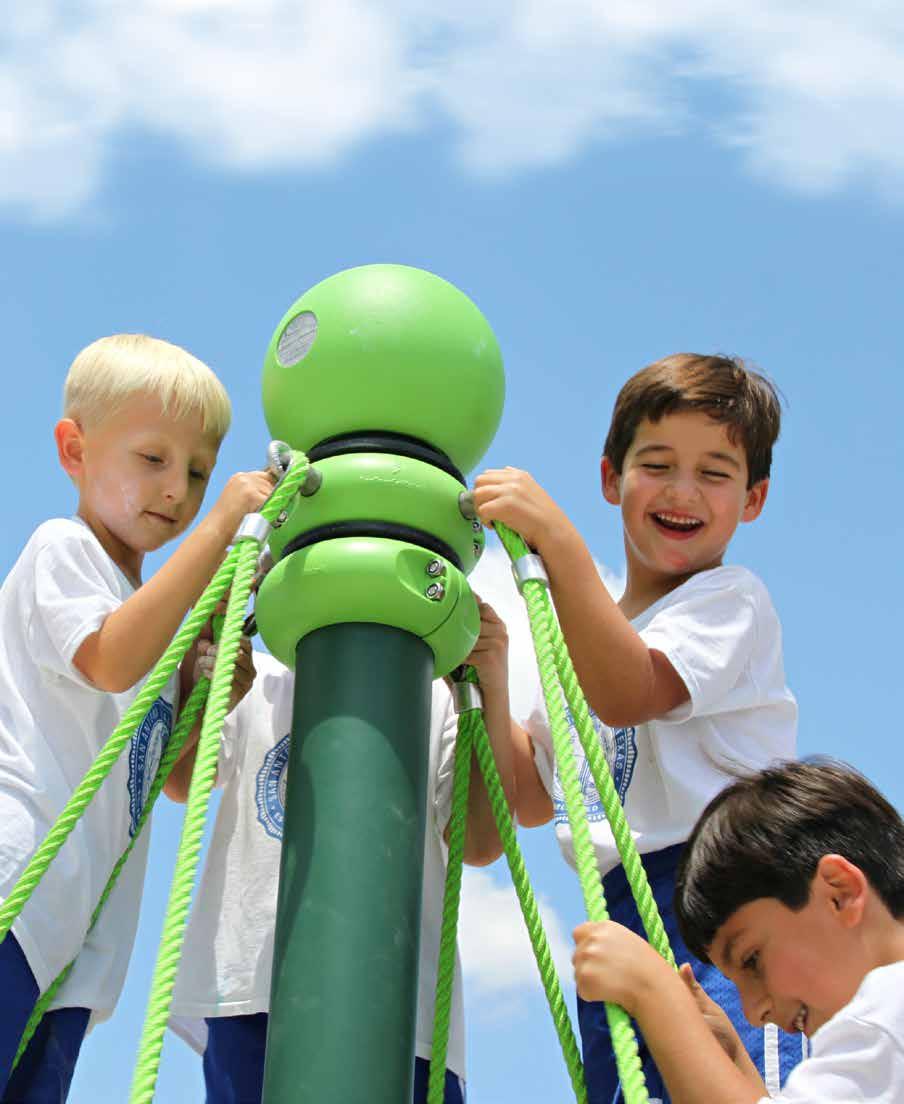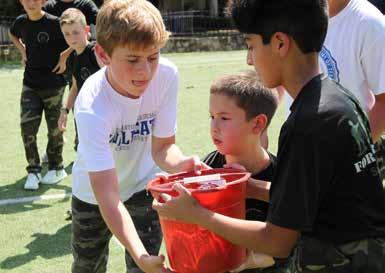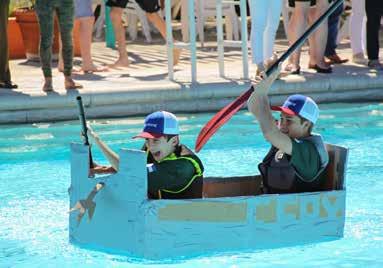
3 minute read
Get Outdoors - Benefits that go Beyond Fresh Air
Getting outdoors is such a simple, but effective remedy for students to get a much-needed break from their indoor classroom setting. In outdoor settings, children are more motivated to work together in groups, which can improve their social skills. They learn to manage conflicts, communicate, and cooperate with their peers in a more effective manner. And, while being outdoors naturally inspires kids to be more physically active, it also optimizes a child's social, emotional, and cognitive development.
Whether at recess on the playground, leadership activities on Frost Field, or adventures that take boys off campus, San Antonio Academy recognizes the value of outdoor learning.
BENEFITS INCLUDE SOCIAL EMOTIONAL LEARNING (SEL)
For the Primary School boys, recess is hands-down one of their favorite times of the day to get outside. Running, jumping, climbing, and sliding are all a part of play to them. They may not realize it—or at this stage in their development care—but they are also attaining behavioral skills.
“Recess is a natural opportunity to put social/emotional learning into practice,” says SAA’s School Counselor, Theresa Moore, adding, “It requires the regular, repetitive, patterned practice of specific behavioral skills that develop the necessary emotional and social skills that shape emotional intelligence.”

Spinning in circles is one of the best activities to help children gain a good sense of body awareness.
To find a dizzying example of repetitive movements that Theresa refers to, look no further than the new “Spinning Tree” installed as part of the playground upgrades. “Spinning in circles is one of the best activities to help children gain a good sense of body awareness,” says 1st Grade Teacher, Tanya Weis. “Through spinning, they figure out where their 'center' is and then are more able to coordinate movement on the two sides of their body. Rather than making children susceptible to falls, spinning actually improves a child’s surefootedness, and it also improves their ability to concentrate once they’re back in the classroom.”
As Academy boys outgrow recess (but do they really?), SAA identifies other areas in the curriculum to get them outdoors to help stimulate key SEL components such as self-awareness, social awareness, responsible decisionmaking, self-management, and relationship skills—or what The Academy recognized decades ago as “leadership skills.”
For Col. (Ret.) Steve Marshall, the “Company Challenge” was specifically created with the SEL concepts in mind. He says, “Partnering with the Physical Education Department, each Company goes head-to-head in events that stress leadership, followership, and physical development… Its purpose is also to instill Company spirit and team work by using various competitive modes to achieve this.” The new initiative takes place three times-a-year in the big, wide-open space of Frost Field, a perfect venue for cadets to burn “boy-energy” while simultaneously gaining a sense of esprit de corps.

Boys learn to work together as a team in the "Company Challenge" activity.
Across from Frost Field and over in Charlotte Hall, 8th Grade Science Teacher, Jennifer Hayes, conducted her own outdoor experiment. After weeks of research and engineering, she took her boys to the Alamo Heights swimming pool for the first “Cardboard Box Regatta” to test if their vessels were indeed seaworthy. The fun physics activity was a true team building experience and created an instant Academy tradition. Amazing what getting outdoors and adding water can do for a school!

Just add water: The 8th Grade "Cardboard Box Regatta" is a fun lesson in physics.
If you wonder if these activities may usurp classroom time, just ask Tanya, who will chalk up her 20+ years teaching firstgraders as testament to the benefits of boys getting more outdoor time, “…Yes, they are having fun, however, they are also preparing their minds and bodies for the magic that will happen within the confines of the classroom walls as well.”
So the next time you see our students whirling around at recess, or in formation on Frost Field passing along a waterfilled bucket, realize that there is something more intentional taking place—and it has a lot to do with the outdoor space.


